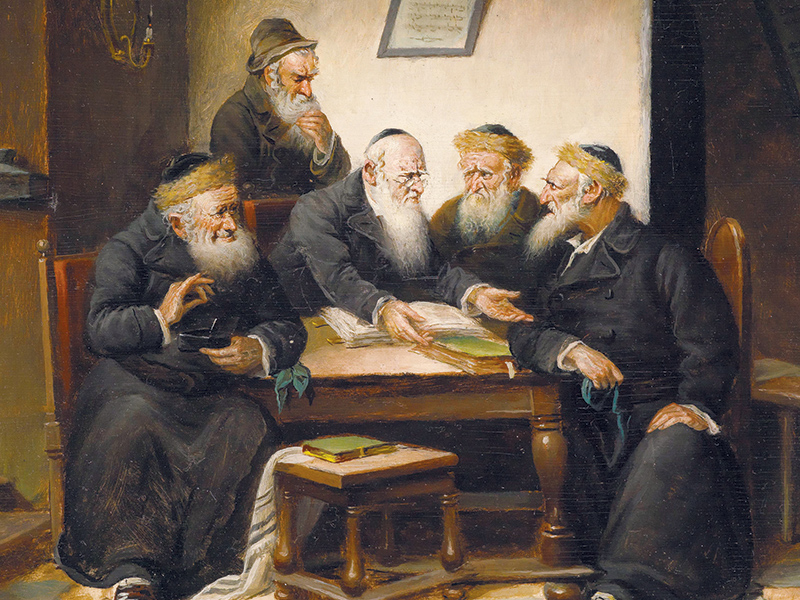It’s coming up to Shmini Atzeret time. Along with its partner, Simchat Torah, this holiday concludes the series that began with Rosh Hashanah. It’s a chain of holidays that we celebrate joyfully but – sometimes – never seem to end.
Over the years, you will have heard many sermons on the meanings, overt and abstruse, of this tacked-on ending to the holiday season. The Torah is curt: “On the eighth day, you shall observe a sacred occasion and bring an offering by fire to the Lord; it is a solemn gathering: you shall not work at your occupations.” (Leviticus, 23:39)
Numbers, 29:35 is similar, with explicit offerings to be made: the usual rams, bulls, lambs, goat, etc.
The holiday is also mentioned in sections that are ascribed to the Priestly Code: i.e. in Leviticus 23 and Numbers 29.
Nehemiah notes simply, after the great ceremonial reading of the Torah, “And on the eighth day was a solemn assembly, according to the ordinance.”
The event that anchors this holiday for me is the story in Chronicles. It is the culminating day of King Solomon’s dedication of his Temple. After the ceremonies, we are told, on the eighth day of the dedication, the king made a great feast and “sent the people away happy” – something we always try to do on our own occasions for celebration.
READ: SIMCHAT TORAH IDEAS AS THE HOLIDAYS COME TO A CLOSE
That, however, seems not to be what Shmini Atzeret was meant for. What, in fact, was it meant for, added to an already jam-packed series of autumn holidays?
Rashi explains: it is like a king whose son visits him for a number of days and then the son prepares to leave (Sukkot), but is convinced by his father to stay just one more day. In our case chutz l’aretz, outside Israel, we get two days, Simchat Torah completing the set.
Maybe the thought of King Solomon’s dedicatory feasts put Rashi in mind of the story of the king. I have found several variations on the king-son story. All emphasize the unique opportunity of a monarch to enjoy the company of his child alone, without interruption, just one more day.
However, we no longer have Temple or king. Where does that leave us?
The event that sets Shmini Atzeret off for me is the prayer for rain, Geshem. Seems to me that we can use this prayer in several ways.
One is to recall the fraught nature of the holiday in ancient Israel. Rain was most needed in the winter season, the Land of Israel being – perhaps – flowing with milk and honey, but alas, not flowing with rivers to flood its fields. The country was and is totally dependent on the rainfall of the winter.
Hence the (manifestly pagan) ceremony of Hoshanah Rabbah, beating out willow branches and calling for the essential water; the water ceremony of Bet HaShoevah, the drawing of the water, with its ecstatic dancing; the pouring out of water in front of the altar; and our connection to that today, the prayer for rain.
Another way is to think about the change in season and the fragility of our existence, even in our advanced and seemingly secure world.
Since I live on the West Coast – ground zero for The Big One – I timidly prepared supplies for keeping alive after our house has crumbled around us. They include a lot of water. But is that enough? Probably not.
Shmini Atzeret reminds us that life is not secure, that we still rely on a good-natured Mother Earth. We always stand on the threshold of joy or the terror of disaster, of sufficient harvest or stringent want – in the old days a real possibility.
Even in our day, with the climate reacting to our own heedlessness, Shmini Atzeret may give us the chance to feel on the threshold of abundance or disaster.
Too preachy? Then just enjoy the celebration of Simchat Torah, a chance to dance the night away.
